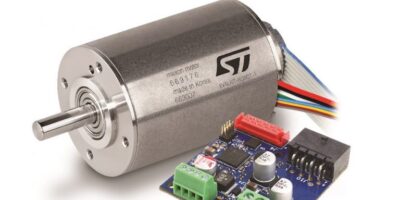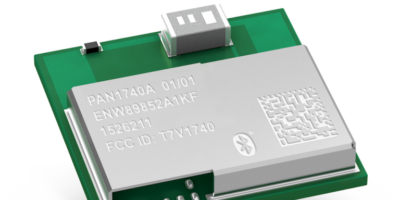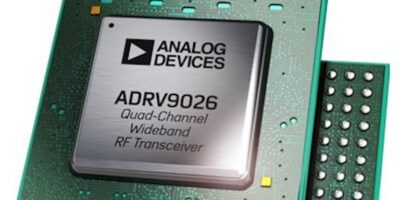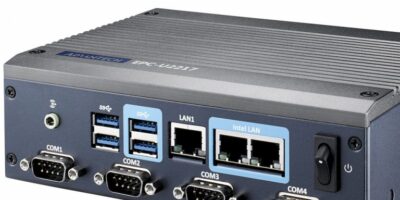Servo control development kits for drives, robotics and automation that have been jointly created by STMicroelectronics and Maxon will displayed at this week’s SPS event in Nuremberg, Germany (stand 10.1/138).
Maxon develops precision motors and is a member of the ST Partner Program to accelerate the design of robotics applications and industrial servo drives.
The Evalkit-Robot-1 helps users approach the world of precise positioning and high-end motion in servo drives and robotics. The kit includes a Maxon 100W brushless direct current (BLDC) motor with built-on 1024-pulse incremental encoder. The magnetic design motor ensures smoothness and balance to allow fine control even at low rotor speeds, says the company.
The kit’s servo control board contains ST’s STSPIN32F0A intelligent three-phase motor controller and a complete inverter stage built with ST power transistors ready to connect to the motor. Motor control firmware is also included to start the motor and begin sending commands.
ST’s STSPIN32F0A system-in package contains critical circuitry for motor control, including an STM32F031C6 microcontroller and three-phase inverter driver in a compact 7.0 x 7.0mm VFQFPN package. The microcontroller is loaded with firmware for Modbus communication and field-oriented control with precise positioning capabilities. Power management and current sensing circuitry are also embedded in the device making it more flexible and versatile, says ST.
The Maxon EC-i 40, 40mm diameter, 100W BLDC motor embeds a Maxon ENX 16 Easy 1024-pulse incremental encoder for precision control. Hall sensors for detecting rotor position are included. The motor is designed for high output torque with low cogging torque, which permits smooth motion across the speed range and enhances positioning precision.
The three-phase BLDC inverter power stage features ST’s STL7DN6LF3 60V, low on-resistance, N-channel MOSFETs, capable of 6A maximum output for driving the motor.
The kit is available now.
Maxon drives are used wherever the requirements are particularly high, such as in NASA’s Mars Rovers, in surgical power tools, in humanoid robots, and in precision industrial applications.
Semiconductor specialist, ST delivers energy-efficient products to enable smarter driving and smarter factories, cities and homes and the next generation of mobile and IoT devices.







